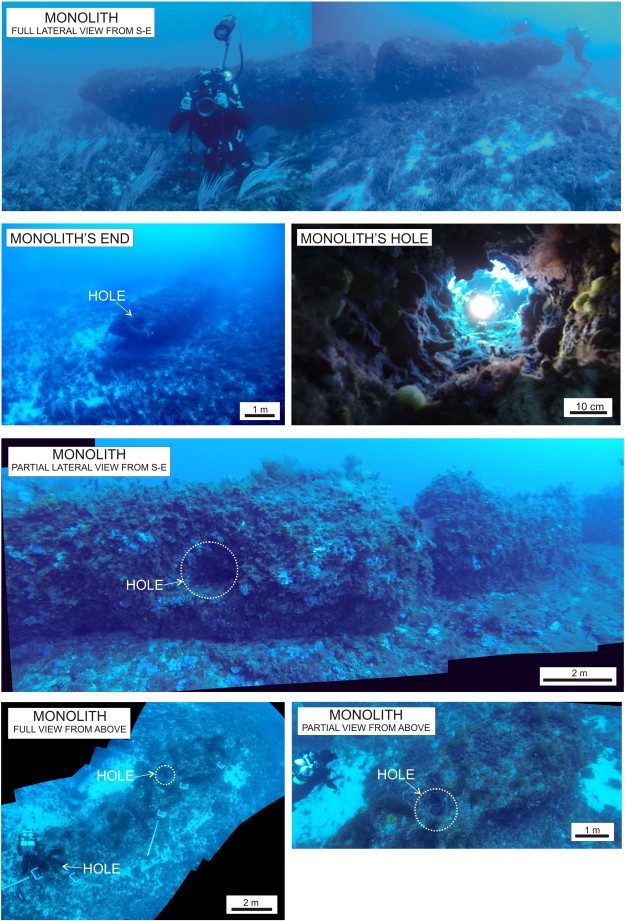A mysterious monolith the size of the massive structures of the Stonehenge was discovered by archaeologists off Sicily in Italy that can provide a new link to ancient Mediterranean civilizations and culture. This man made stone carving is dated back to 10,000 years back suggesting some highly advanced technology not usually associated with ancient cultures.
This colossal block of stone weighs around 15 tons and was broken into two fragments which were lost upon the rising of sea levels that caused massive flooding among Sicilian islands that once boasted a rich civilization.
This monolith reached up to 131 feet that is now located under the Mediterranean Sea from an island once situated in the Sicilian Channel but became completely covered by water some 9,500 years ago during the last ice age.
According to Emanuele Lodolo of the Istituto Nazionale di Oceanografia e Geofisica Sperimentale, this new discovery reveals a technological innovation and development that was somehow achieved by Mesolithic natives of the Sicilian Channel region. This kind of effort can offer clues about crucial technical skills and advanced engineering tools in the past.
Lodolo also adds that it is still not known what this monolith means or is used for or whether it is part of a bigger structure that could be functional since ancient island settlers were fisher folk and traded with neighboring islands. He says that the monolith could also be some sort of lighthouse or anchoring system.
The first settlers of Sicily were believed to move into the island some 17,000 years ago when a land bridge existed that connected to Italy. Apart from this monolith, there are also a series of megalithic temples that are found in the island of Malta which is also near Sicily however, the monolith is older than all these other ancient structures.
Clues about ancient Mediterranean culture and civilizations are often discovered via land structures such as the Gobekli Tepe located in southeastern Turkey, dating back to 11,600 years. This recent discovery however, hopes to link relics from the sea to new knowledge about ancient civilizations in the region.
These new findings are published in the Journal of Archaeological Science.




























